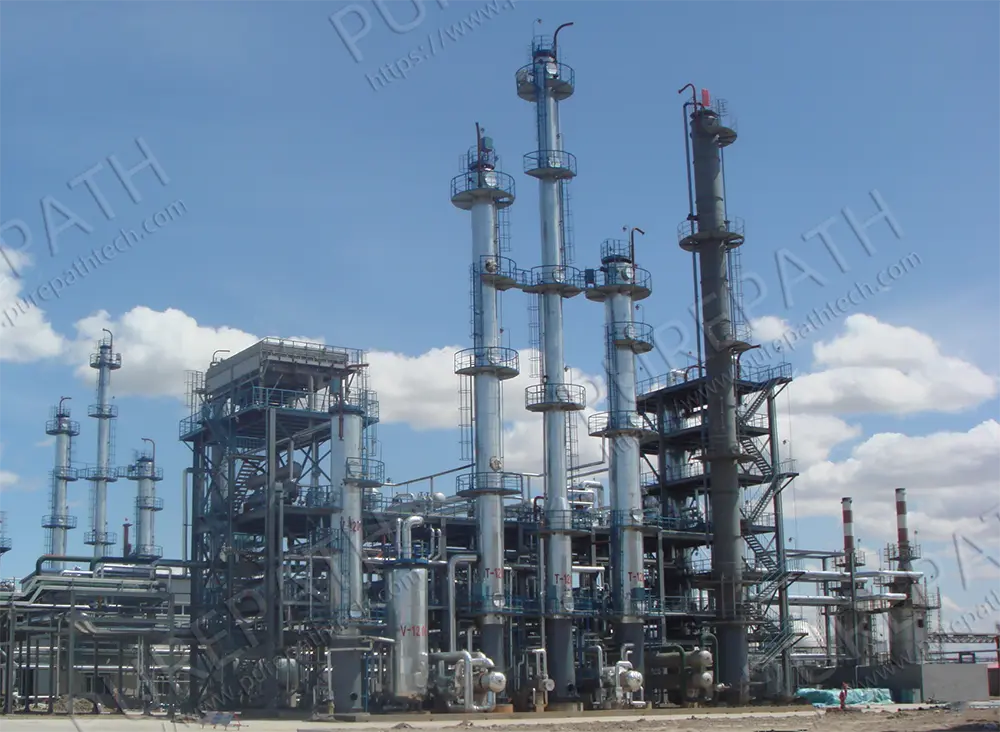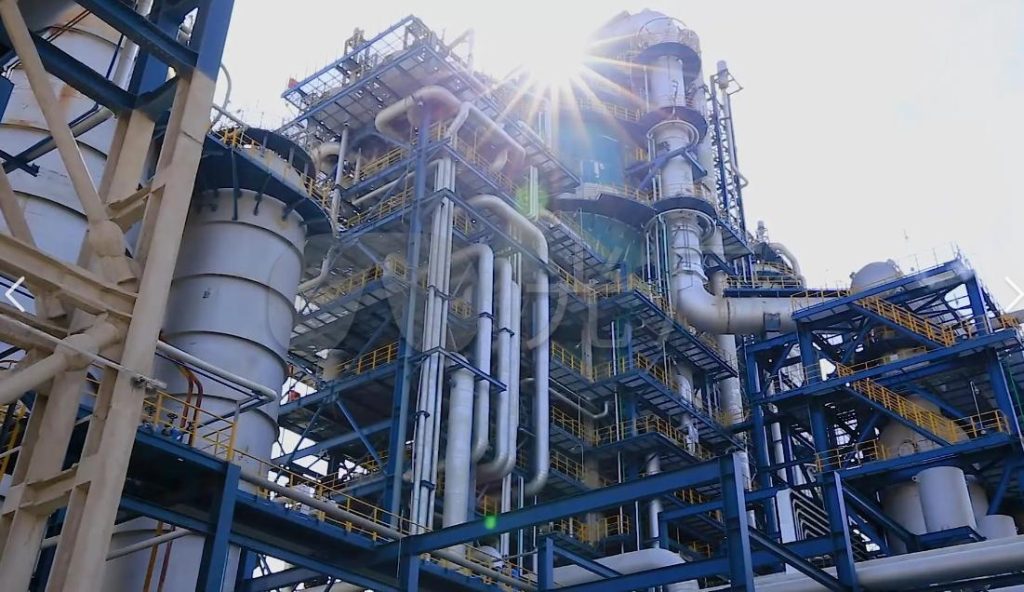What Technologies Are Used in White Spirit Production Process?

White spirit is a widely used solvent in various industrial and household applications and is produced through a series of meticulous processes designed to ensure purity and effectiveness. This chemical solvent, known for its ability to dissolve grease, oils, and other substances, is crucial in industries ranging from paints and varnishes to cleaning products and pharmaceuticals.
An Overview of the White Spirit Production Process
White spirit, a versatile petroleum-derived solvent, is produced through a multi-step refining process.
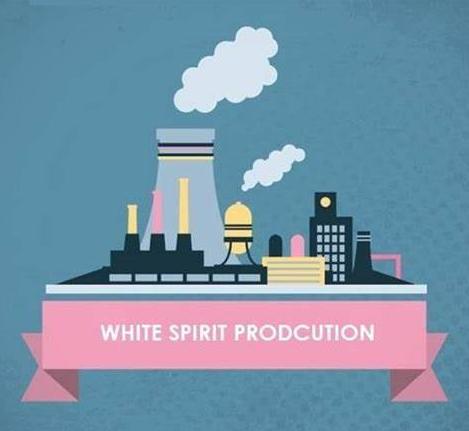
- The process begins with the selection of appropriate feedstocks, typically derived from the naphtha or kerosene fractions of crude oil. These fractions are rich in hydrocarbons, the building blocks of white spirit.
- The chosen feedstock is then subjected to a rigorous purification process. This often involves removing impurities such as sulfur compounds, which can negatively impact the quality and performance of the final product. The purification techniques may include hydrotreating, a process that involves reacting the feedstock with hydrogen in the presence of a catalyst to remove sulfur and other impurities.
- Once purified, the feedstock is fractionally distilled. This process separates the hydrocarbons based on their boiling points. The specific boiling range for white spirits is typically between 140°C and 220°C. The fraction within this range is collected and further refined to ensure it meets the desired specifications.
- The collected fraction may undergo additional treatments, such as blending with other components or the addition of additives to enhance its properties or performance. For example, additives can be used to improve the solvent’s drying time, odor, or compatibility with other materials.
The final product, white spirit, is a clear, colorless liquid with a mild odor. It is widely used in various industries, including painting, cleaning, and degreasing, due to its excellent solvent properties and relatively low toxicity.
Key Technologies Used during White Spirit Production
White spirit production involves a series of refining processes that separate and purify the desired components from crude oil. Here’s a more detailed look at the key technologies involved:
Physical Method to Produce White Spirit
1. Fractionation Method
The fractionation method is a separation technique that capitalizes on the differences in boiling points between various substances. In the context of producing white oil, this method involves several key steps:
- Heating: The process begins by heating the petroleum feedstock to a high temperature. This thermal energy causes the petroleum components to evaporate at different rates, depending on their boiling points. The aim is to bring the mixture to a temperature where the components can be effectively separated.
- Evaporation and Condensation: As the petroleum vapor rises through the distillation column, it encounters a series of temperature-controlled trays or plates. Components with higher boiling points condense on the lower trays, while those with lower boiling points continue to rise. The vapor then reaches a condenser where it is cooled and re-liquefied.
- Separation: The liquid is collected in fractions according to its boiling range. Each fraction is composed of components with similar boiling points. By carefully controlling the temperature and pressure during this process, it’s possible to isolate the desired fractions that comprise white oil.
- Purification: The fractions collected may still contain impurities or other undesired components. Additional steps, such as further distillation or filtration, may be employed to refine the white oil to the required purity and quality.
The fractionation method is highly effective in producing white oil due to its ability to precisely separate components based on boiling point differences.
2. Solvent Extraction Method
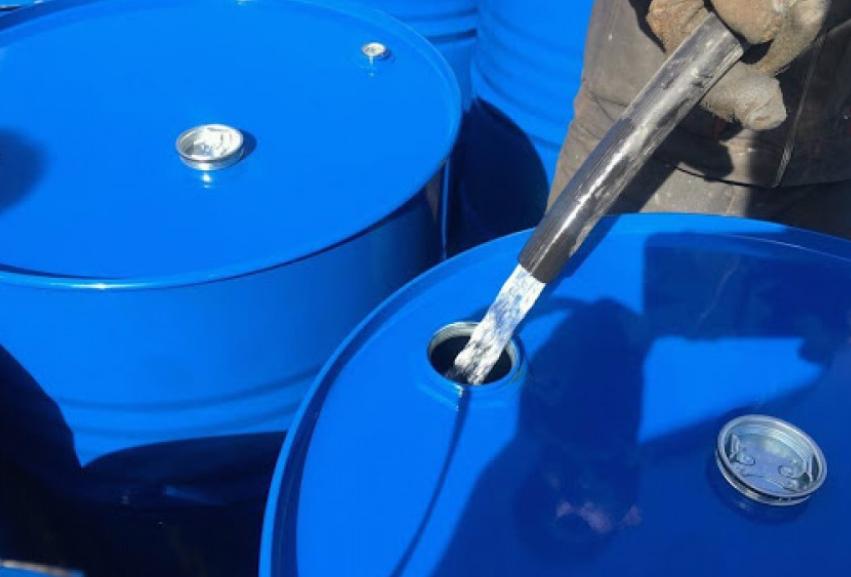
The solvent extraction method leverages the differing solubilities of substances in various solvents to achieve separation. This method is particularly useful for processing natural oils and fats. Here’s a detailed look at how this method works for producing white oil:
- Mixing: The first step involves mixing the oil or fat with a solvent. The choice of solvent depends on its ability to dissolve specific components while leaving others behind. For white oil production, common solvents might include hexane or other hydrocarbons that selectively dissolve the target components.
- Separation: After mixing, the solution is allowed to settle, or it is subjected to centrifugation or other separation techniques. This process separates the solvent-oil mixture from the undissolved residues. The soluble components, which include the desirable white oil, are now in the solvent phase.
- Extraction: The solvent containing the dissolved white oil is then separated from the residual solid or liquid impurities. This step is crucial to ensure that only the pure white oil is extracted.
- Solvent Removal: The next step involves removing the solvent to recover the white oil. This is typically done through evaporation or distillation. The solvent is recovered and can be reused in the extraction process, making it a cost-effective and environmentally friendly approach.
- Purification: After the solvent removal, the white oil may still contain minor impurities. Additional purification steps, such as filtering or further refining, ensure the final product meets the required quality standards.
The solvent extraction method is advantageous for its ability to selectively isolate desired components from complex mixtures, making it suitable for producing high-purity white oil.
Chemical Method to Produce White Spirit
White oil can also be produced using chemical methods that enhance its purity and stability. Here are two common chemical methods employed in its production:
1. Esterification Method
The esterification method is a chemical process that produces ester compounds through the reaction of alcohols with carboxylic acids. In the context of producing white oil, this method typically involves the esterification of natural oils or fats. Here’s a more detailed look at the process:
- Raw Materials: The process starts with natural oils and fats, which contain triglycerides—molecules made up of glycerol and fatty acids. These oils and fats are reacted with an alcohol, such as methanol or ethanol.
- Reaction: During esterification, the triglycerides react with the alcohol to form esters and glycerol. For instance, when methanol is used, the reaction produces methyl esters (biodiesel) and glycerol as byproducts. This reaction is catalyzed by an acid or a base and typically occurs under elevated temperatures and pressures to increase efficiency.
- Fractionation: After esterification, the product mixture contains a range of compounds, including the desired esters and impurities. To obtain pure white oil, the mixture undergoes fractionation. This separation process utilizes differences in boiling points to isolate and purify the esters, which are then further refined to produce the final white oil.
The esterification method is advantageous for producing high-purity white oils from renewable sources, but it requires careful control of reaction conditions and subsequent purification steps.
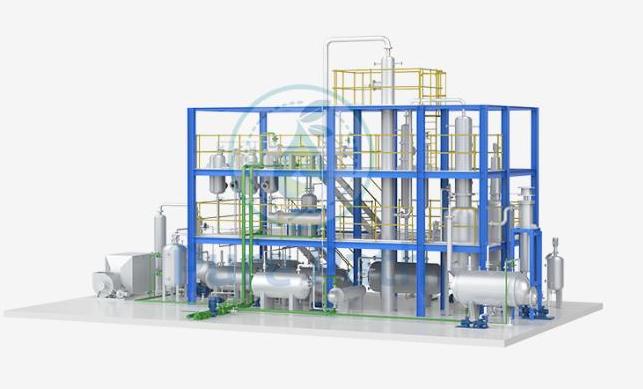
2. Hydrogenation Method
The hydrogenation method is another critical process used to enhance the quality of white oil. This method involves converting unsaturated fatty acids into saturated fatty acids through a hydrogenation reaction. Here’s a detailed breakdown of this method:
- Raw Materials: Hydrogenation starts with natural oils and fats, which contain a mix of saturated and unsaturated fatty acids. Unsaturated fatty acids, which have one or more double bonds in their carbon chains, are prone to oxidation and can reduce the stability of the oil.
- Reaction: The hydrogenation process involves adding hydrogen gas to the unsaturated fatty acids in the presence of a catalyst, typically nickel or platinum. The hydrogen atoms react with the double bonds in the fatty acids, converting them into single bonds and thus transforming the unsaturated fatty acids into saturated ones.
- Outcome: This conversion improves the stability and shelf-life of the oil, making it less prone to oxidation and rancidity. The result is a more stable and higher-quality white oil, which is particularly important for applications requiring long-term storage or high stability.
Both methods play a crucial role in the production of white oil, each contributing to its purity and stability in different ways. Esterification focuses on generating and purifying ester compounds, while hydrogenation enhances the stability by converting unsaturated fatty acids. Together, they ensure that the white oil meets the high standards required for various industrial and consumer applications.
In addition to the above methods, there are also sulfonation method, hydrogenation-slightly acidic sulfonation method, etc. Although the sulfonation method requires less investment and is simple to operate, it is gradually being eliminated due to its large environmental pollution. The hydrogenation-slightly acidic sulfonation method has become a feasible alternative method because it greatly reduces the amount of fuming sulfuric acid used and has less environmental pollution.
FAQs about White Spirit Production
1. What is the white spirit made from?
White spirit is derived from crude oil and primarily consists of a mixture of aliphatic, alicyclic, and aromatic hydrocarbons obtained through the fractional distillation of the kerosene fraction.
2. Why is hydrogenation important in white spirit production?
Hydrogenation is important because it removes unsaturated hydrocarbons, improving the stability, reducing the odor, and enhancing the overall quality of the white spirit.
3. Can the composition of the white spirit vary?
Yes, the composition of white spirits can vary depending on the specific formulation and the intended use. Blending different hydrocarbon fractions allows manufacturers to tailor the product for various applications.
4. Is white spirit environmentally friendly?
White spirit is a petroleum-derived product and, like other solvents, should be used and disposed of responsibly. There are concerns about its environmental impact, particularly regarding air quality and water contamination, so handling and disposal should follow safety guidelines.
5. What equipment can I use to produce white spirit?
To produce a white spirit, you can use a White Spirit Distillation Plant. This specialized equipment is designed for the fractional distillation of petroleum-based raw materials. It typically includes a distillation column, heat exchangers, condensers, and storage tanks. The plant heats the raw material to separate the desired white spirit components based on their boiling points, ensuring a high-purity final product.
In summary, white spirit production involves both physical and chemical methods, such as distillation and hydrogenation, to achieve a high-quality product. By understanding these processes, one can appreciate the complexity and precision required in producing white spirits for various industrial uses.


